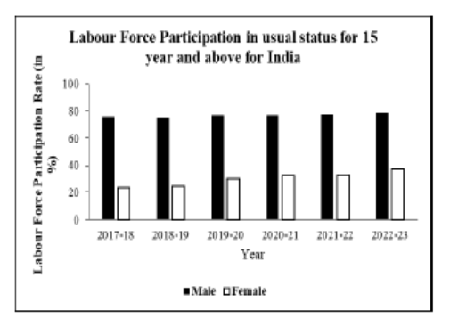
Geographical analysis
Department of Geography & GIS

Department of Geography & GIS

Geographical analysis
DOI: 10.53989/bu.ga.v14i1.24.195
Year: 2025, Volume: 14, Issue: 1, Pages: 22-29
Original Article
Simanchal Nayak1∗, Siba Sankar Sahu2, Bubun Mahata1
1Research Scholar, Department of Geography, Ravenshaw University, Cuttack, Odisha, India
2Assistant Professor, Department of Geography, Ravenshaw University, Cuttack, Odisha, India
*Corresponding Author
Email: [email protected]
Received Date:16 October 2024, Accepted Date:08 June 2025
Gender inequality continues to be a major concern for humanity as it hinders inclusivity and social progress. The gender differences are the manifestations of the complex power relations in the society aggravated by strong patriarchal norms. The paper is an attempt to examine the status and determinants of gender inequality across the states of India. The study is based on secondary datasets such as National Family Health Survey-5, Census of India, Periodic Labour Force Survey, Ministry of Law and Justice report to evaluates the gender inequality status and determinants using a gender inequality framework. The Gender Inequality Index (GII) scores revealed that overall higher levels of gender inequality do not concentrate in one particular region, rather it spread across the states. It argued that even though the status of women has improved in recent times, yet gender inequality still prevails in many parts of the country. The study found that political representation and labour force participation of women are the strong determinants of gender inequality in the Indian society. Thus, the study influences the current scenario to a great extent and major implications of the study will be helpful to formulate effective policies to ensure gender equality in the society.
Keywords: Gender Inequality, Reproductive health, Women, Gender Inequality Index (GII)
© 2025 Nayak et al. This is an open-access article distributed under the terms of the Creative Commons Attribution License, which permits unrestricted use, distribution, and reproduction in any medium, provided the original author and source are credited.
Published By Bangalore University, Bengaluru, Karnataka
Subscribe now for latest articles and news.